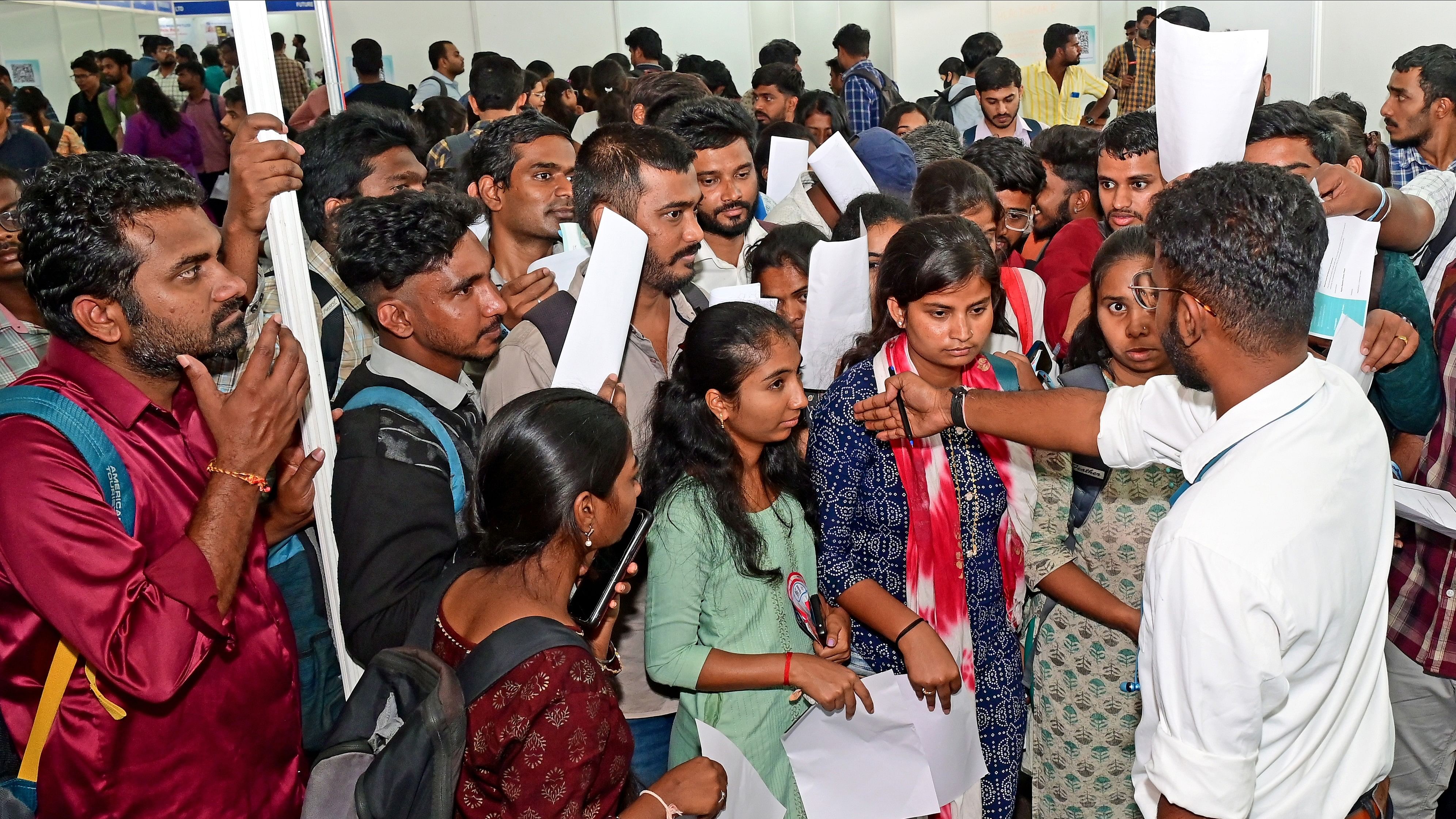
According to the latest Economic Survey, India needs to create over 7.8 million non-farm jobs annually to accommodate its rising workforce.
Though India has held the distinction of being the fastest-growing big economy in the world for several consecutive years, its biggest worry has been its poor record of job creation, particularly among educated young people. Even if this is part of the global phenomenon of ‘jobless growth’ due to technology becoming more capital- and skill-intensive, India can no longer ignore this issue. The problem will only get worse with the looming uncertainty posed by the use of artificial intelligence for jobs across most skill categories.
According to the latest Economic Survey, India needs to create over 7.8 million non-farm jobs annually to accommodate its rising workforce. To achieve this, the government announced several new initiatives in the Budget, as components of an employment-linked incentive programme. A one-month wage for all new employees would be provided by the government as a direct benefit transfer in three instalments up to Rs 15,000. The eligibility salary limit will be Rs 1 lakh per month. The government will reimburse employers up to Rs 3,000 per month for two years towards their EPFO contributions for each additional employee. The government hopes that these will incentivize both employees and employers to move from informal to better-quality formal employment. In addition to these schemes, an internship scheme for one crore youth in 500 top companies with a monthly internship allowance of Rs 5,000 and one-time assistance of Rs 6,000 is to be provided, which will give new entrants to the workforce exposure to the actual industrial job environment and opportunities to learn new skills.
While these new initiatives may have some impact, it is doubtful whether these incentives alone can create 7 to 8 million new jobs every year. The best-case scenario would be an improvement in the quality of jobs (with better benefits and social security) as workers shift from informal to formal sector.
Emphasis is also being placed on the role of MSMEs for job creation, especially for workers in villages and small towns. Apart from providing new jobs, this will generate more income and demand, reducing rural distress and addressing the lack of mass demand for lower-end goods and services such as FMCG goods and two-wheelers. To this end, Mudra loans will be increased from Rs 10 lakh to Rs 20 lakh for those MSMEs that have availed of and successfully repaid loans. In addition, the government
will guarantee credit for MSMEs with a dedicated fund of
Rs 100 crore.
All these new initiatives are in addition to the enhanced government infrastructure spending on roads, railways, ports, bridges, airports, and power stations, which create better-paying jobs than what is available in traditional agriculture and self-employment. It is hoped that the economic recovery, which primarily started on the back of enhanced government capex, will soon attract new private investment (average industrial capacity utilisation has currently gone up to around 75% from 60% in June 2021), creating additional consumption demand through the multiplier effect and a virtuous cycle that creates jobs.
However, job creation is not solely dependent on Budget proposals. For example, the Economic Survey emphasises attracting Chinese investment into the manufacturing sector and thereby integrating local companies into global supply chains by raising import duties selectively on Chinese products. This would reduce the trade deficit with China, create industrial jobs in India, and increase exports. But these initiatives in a world with many countries wanting to shift imports away from China to other countries are matters of wider geo-political strategies of the government, which have little to do with budgetary policies and would require a reversal of the existing investment policy stance against China. So far, the major beneficiaries of this ‘China plus one’ strategy have been Mexico, Vietnam, Taiwan, and South Korea, but not India.
Finally, private investment (including FDI), which eventually creates local jobs, primarily rests on the growth and profitability of markets, macro-economic stability, low inflation, competitive corporate tax rates, stability of tax regimes and regulations, infrastructure, availability of skilled workers, ease of doing business, etc., which go much beyond the annual budgetary exercise. Resorting to quotas for local workers would be a further disincentive to new investment in India. Our entire education ecosystem (including access to education via the internet and the quality of teachers), starting from the primary schools (especially in rural areas), needs to be revamped. We produce so many graduates every year with no marketable skills or the mindset or ability to learn new skills. Simply intervening at the entry point of the factory gate would not be enough.
(The writer is a former Professor of Economics at IIM, Calcutta, and Cornell University, US)